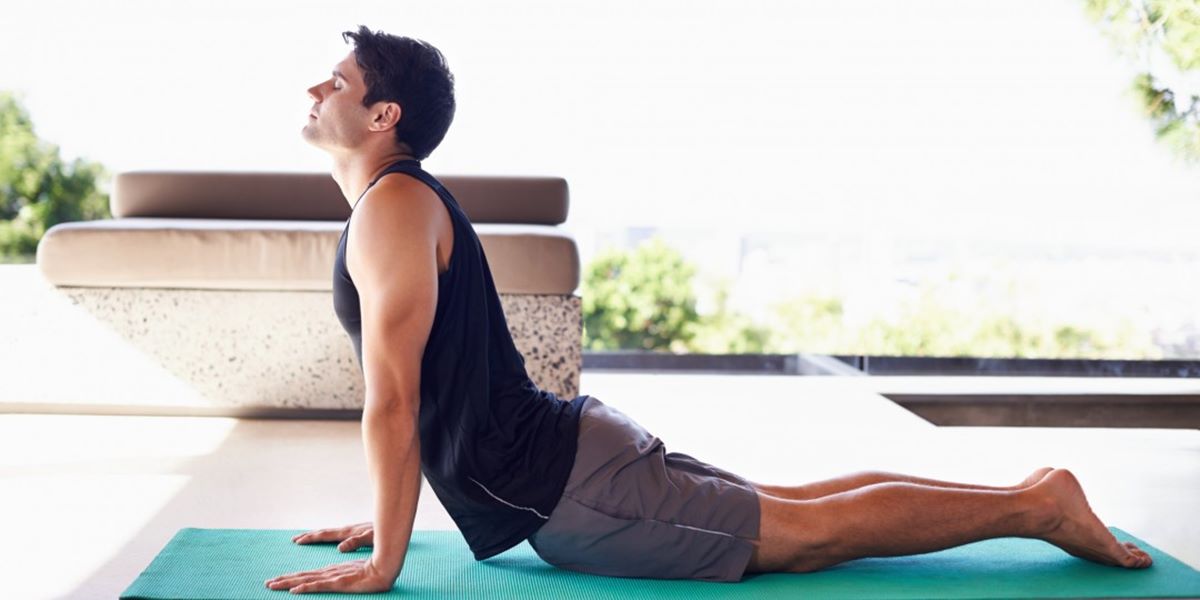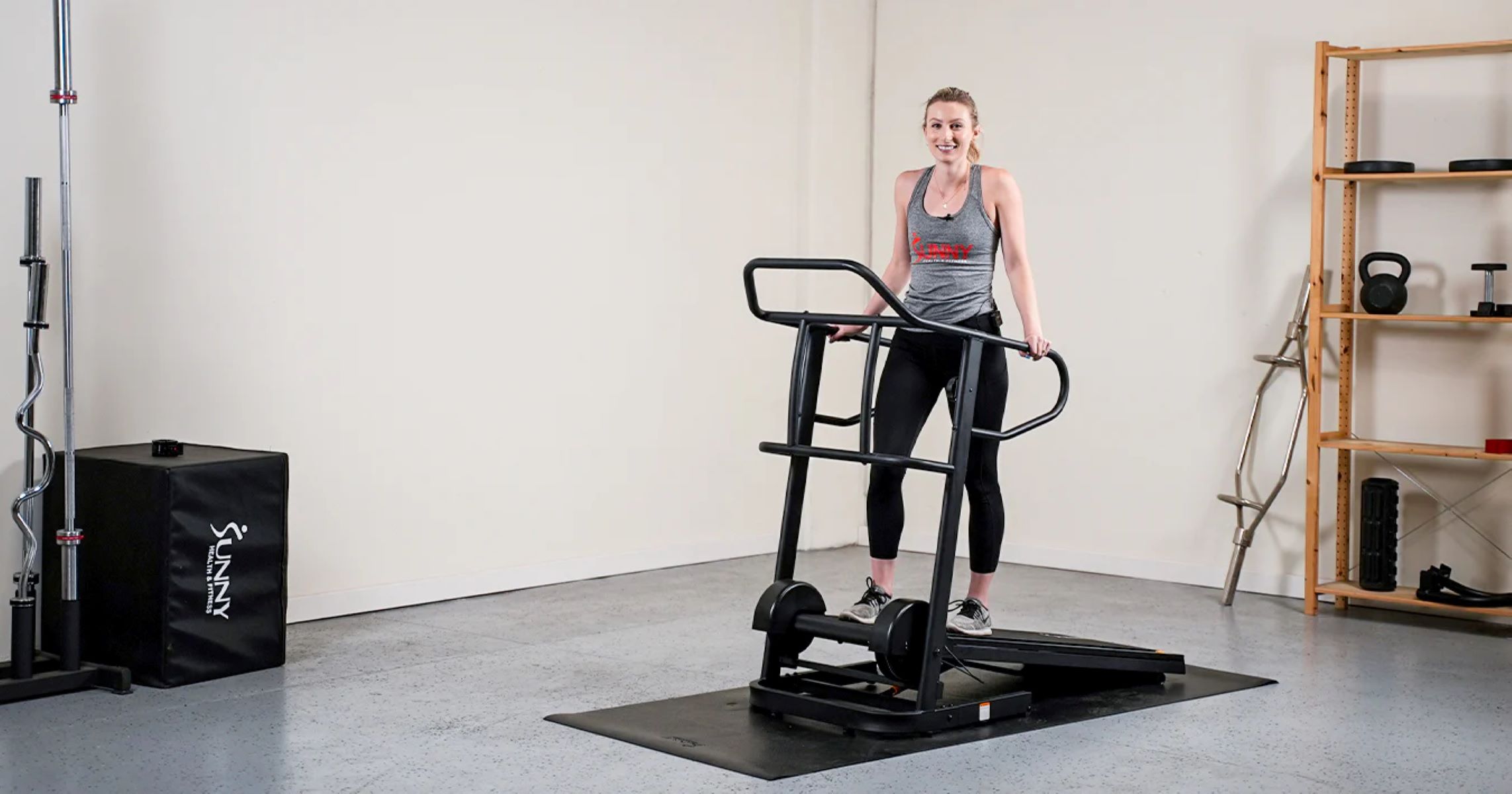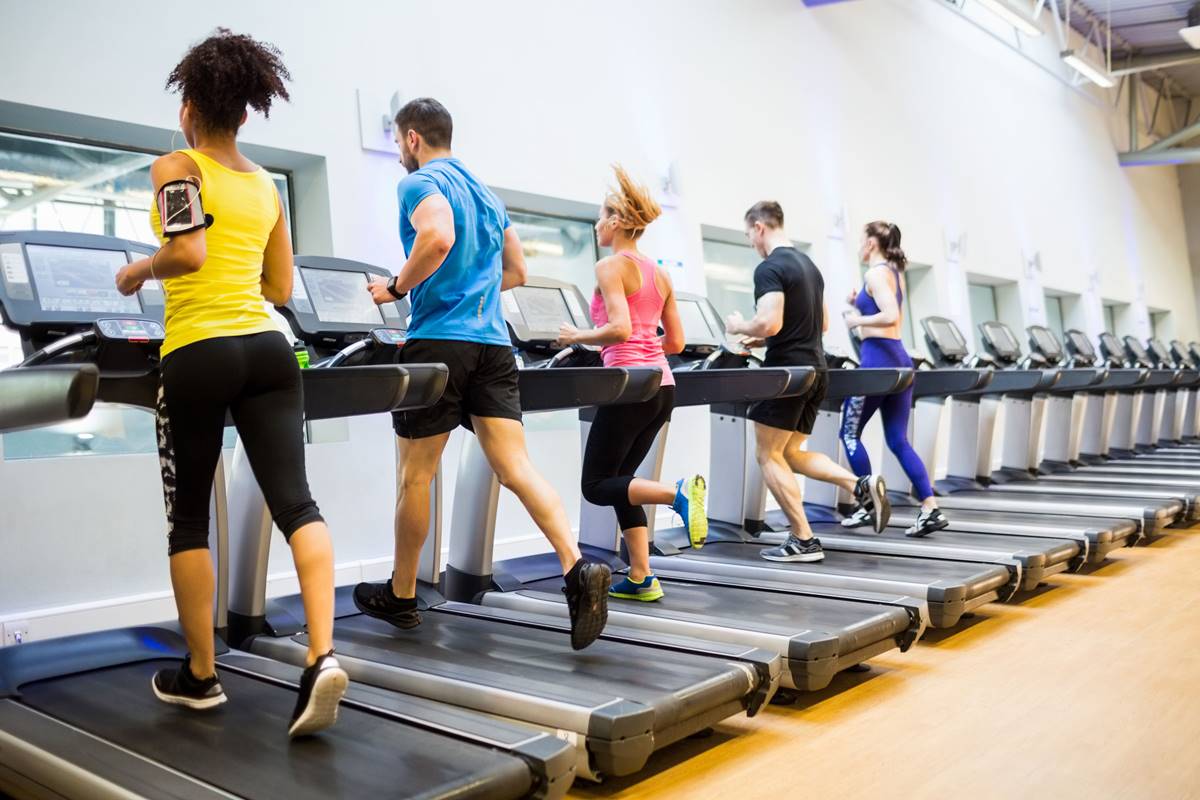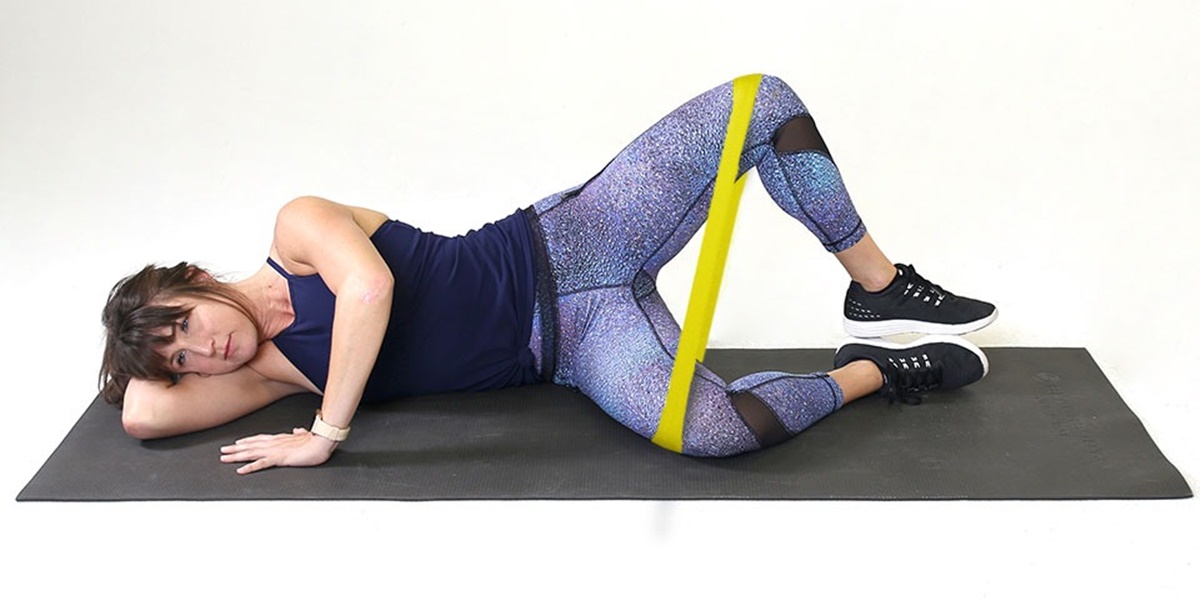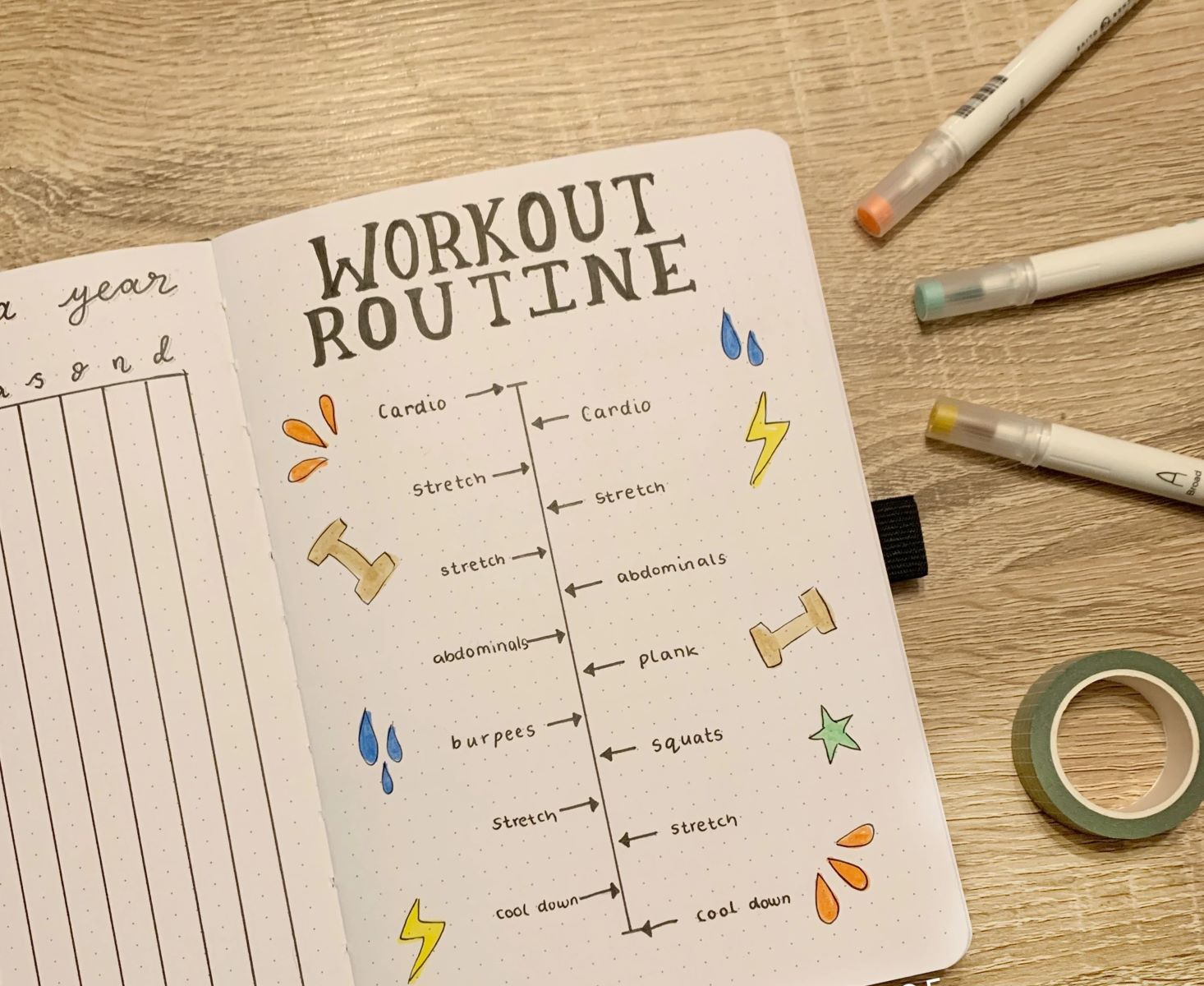

Featured
How To Do Exercise
Published: September 30, 2023
Learn the best way to incorporate featured exercises into your routine and achieve your fitness goals. Find out how to do exercise effectively and efficiently.
Introduction
Welcome to the world of exercise! Whether you’re a seasoned fitness enthusiast or just starting your journey towards a healthier lifestyle, exercise is a crucial component of your overall well-being. Engaging in regular physical activity offers numerous benefits that extend far beyond just losing weight or gaining muscle. In fact, exercise positively impacts your mental and emotional health, boosts energy levels, enhances cognitive function, and reduces the risk of chronic diseases.
The importance of exercise cannot be overstated. It is not merely a means to achieve a specific body shape or size but rather an integral part of a balanced and fulfilling life. Through exercise, you can discover new levels of strength, endurance, and resilience. It can be a source of empowerment, self-confidence, and inner peace.
In this comprehensive guide, we will delve into the world of exercise and explore the different types of physical activity, how to set goals, design a workout routine, maintain proper form and technique, progress and increase intensity, and avoid common mistakes. We will also discuss how to stay motivated, overcome challenges, and prioritize safety in your exercise journey.
Whether you’re looking to embark on a weightlifting program, master a new yoga pose, or simply increase your daily activity level, this guide will provide you with the knowledge and tools to make your exercise experience enjoyable and effective.
Benefits of Exercise
Regular exercise offers an abundance of benefits for both your physical and mental well-being. Let’s explore some of the key advantages of incorporating exercise into your daily routine.
- Improved Physical Health: Exercise helps to strengthen your muscles and bones, increase flexibility and mobility, and improve cardiovascular health. It can lower blood pressure, reduce the risk of heart disease, and improve lung function.
- Weight Management: Engaging in regular physical activity can help you maintain a healthy weight by burning calories and building lean muscle mass. It can also boost your metabolism, making it easier to manage your weight in the long run.
- Mental and Emotional Well-being: Exercise has a powerful impact on your mood and mental health. It promotes the release of endorphins, also known as “feel-good” hormones, which can reduce symptoms of anxiety and depression. Regular exercise can also improve sleep quality and boost self-confidence.
- Increased Energy Levels: It may seem counterintuitive, but engaging in physical activity actually boosts your energy levels. Exercise improves blood flow and oxygen delivery to your muscles, making you feel more alert and energized throughout the day.
- Enhanced Cognitive Function: Exercise has been shown to improve brain health and cognitive function. It can enhance memory, focus, and attention span, as well as reduce the risk of cognitive decline and neurodegenerative diseases.
- Reduced Stress and Improved Relaxation: Exercise is a great stress reliever. It helps to reduce the levels of stress hormones in your body and stimulates the release of endorphins, promoting relaxation and a sense of well-being.
- Improved Quality of Life: By improving your physical and mental health, exercise ultimately enhances your overall quality of life. It boosts self-esteem, fosters a positive body image, and enables you to engage in activities you enjoy with more confidence and vitality.
These are just a few of the many benefits that regular exercise can offer. Whether you’re looking to improve your fitness level, manage your weight, boost your mood, or simply lead a healthier and more fulfilling life, incorporating exercise into your routine is a powerful step in the right direction.
Types of Exercise
When it comes to exercise, there is a wide array of activities to choose from, catering to different interests, abilities, and fitness goals. Let’s explore some of the most popular types of exercise:
- Aerobic Exercises: Also known as cardiovascular exercises, these activities focus on increasing your heart rate and breathing rate to improve cardiovascular fitness. Examples include running, cycling, swimming, dancing, and aerobics classes.
- Strength Training: This type of exercise involves resistance training to build and strengthen your muscles. It can be done using free weights, weight machines, resistance bands, or your body weight. Strength training helps improve muscle tone, increase bone density, and boost metabolism.
- Flexibility and Stretching: Flexibility exercises such as stretching, yoga, and Pilates help improve range of motion, enhance flexibility, and promote muscle balance and coordination. These exercises can also help prevent injuries and relieve muscle tension.
- Balance and Stability: Activities that focus on improving balance and stability are crucial, especially for older adults, as they help reduce the risk of falls and injuries. Examples include tai chi, yoga poses that challenge balance, and specific exercises targeting core stability.
- High-Intensity Interval Training (HIIT): HIIT involves short bursts of intense exercise followed by periods of rest or lower-intensity exercise. This type of workout is known to be time-efficient and can help improve cardiovascular fitness, burn calories, and boost metabolism.
- Low-Impact Exercises: These exercises are gentle on the joints and suitable for individuals with physical limitations or joint problems. Examples include walking, swimming, cycling, and using low-impact cardio machines like ellipticals and stationary bikes.
- Group Fitness Classes: Group fitness classes offer a fun and social exercise experience. These classes encompass a variety of workouts, such as Zumba, kickboxing, spinning, and boot camps. They provide structure, motivation, and the opportunity to meet new people with similar fitness goals.
Remember, the key to a well-rounded fitness routine is to incorporate various types of exercise to target different aspects of fitness, including cardiovascular health, strength, flexibility, balance, and overall functional fitness. Choose activities that you enjoy and that align with your fitness goals, and don’t be afraid to try new things to keep your workouts fresh and exciting.
Setting Exercise Goals
Setting specific and realistic exercise goals is essential for staying motivated and making progress in your fitness journey. Here are some tips to help you set effective exercise goals:
- Identify Your Why: Start by understanding why you want to exercise. Are you looking to improve your overall health, lose weight, gain strength, or reduce stress? Identifying your reasons will give you clarity and purpose in setting your goals.
- Make SMART Goals: SMART stands for Specific, Measurable, Achievable, Relevant, and Time-bound. Instead of setting a vague goal like “get fit,” make it more specific, measurable, and time-bound. For example, “I will jog for 30 minutes, three times a week for the next three months.”
- Gradually Increase Intensity: Start with realistic goals and gradually increase the intensity and duration of your workouts. This will help prevent burnout, reduce the risk of injury, and allow your body to adapt and progress at a safe pace.
- Set Short-term and Long-term Goals: Break down your larger fitness goals into smaller, achievable milestones. This will help you stay motivated by experiencing small victories along the way.
- Track Your Progress: Keep a record of your workouts, noting the duration, intensity, and any improvements you notice. This will help you stay accountable and motivated as you see your progress over time.
- Be Flexible: Life happens, and it’s okay to modify your goals if needed. Adjustments may be necessary due to time constraints, injuries, or changes in circumstances. Be flexible and willing to adapt your goals as needed.
- Reward Yourself: Celebrate your achievements along the way. Treat yourself to small rewards when you reach your goals, whether it’s buying new workout gear, enjoying a massage, or indulging in a healthy treat.
- Seek Support and Accountability: Share your goals with friends, family, or a trusted workout buddy. Having a support system can provide encouragement, motivation, and accountability.
Remember, the most important aspect of goal-setting is to make them personal and meaningful to you. Tailor your goals to your own abilities, interests, and lifestyle, and always listen to your body. By setting realistic and achievable goals, you will be more motivated to stay committed and make consistent progress on your fitness journey.
Designing a Workout Routine
Creating a well-rounded and effective workout routine is key to achieving your fitness goals. Consider the following factors when designing your exercise plan:
- Determine Your Frequency: Decide how many days a week you can commit to exercise. Aim for a minimum of three to five days of physical activity to see results, while allowing for adequate rest and recovery.
- Select Your Activities: Choose a variety of exercises that target different muscle groups and aspects of fitness. Include cardiovascular activities, strength training exercises, flexibility work, and balance and stability exercises.
- Balance Your Workouts: Design your routine to have a balance between cardio, strength, and flexibility training. For example, you could alternate between cardio and strength workouts on different days, with dedicated days for stretching and recovery.
- Consider Time Constraints: Be realistic about the amount of time you have available for each workout. If your schedule is tight, choose exercises that are time efficient, such as circuit training or high-intensity interval training (HIIT).
- Address Your Goals: Ensure that your workout routine aligns with your specific goals. If you’re aiming for weight loss, incorporate more cardiovascular exercises, whereas if you’re focused on building strength, allocate more time to resistance training.
- Warm-up and Cool-down: Before each workout, spend 5-10 minutes warming up with dynamic stretches and light aerobic activity. Similarly, cool down with static stretches and gentle movements to help your body recover and reduce post-workout soreness.
- Progress Gradually: Start with manageable intensity and gradually increase the duration and intensity of your workouts. Avoid pushing yourself too quickly, as it can lead to burnout or injury. Listen to your body and give it time to adapt and recover.
- Include Rest Days: Rest days are just as important as workout days. Allow your body enough time to rest and recover to prevent overtraining and minimize the risk of injuries. Use rest days to focus on gentle activities like stretching or foam rolling.
- Account for Variety: Keep your workouts interesting and prevent boredom by incorporating different exercises, trying new activities, or joining classes. Variety not only makes exercise more enjoyable but also challenges your body in different ways.
Remember, designing a workout routine is an ongoing process that should be periodically adjusted as your fitness level improves and your goals evolve. Listen to your body, stay consistent, and have fun with your workouts to create a sustainable and enjoyable exercise routine.
Proper Warm-up and Cool-down
Warming up and cooling down are crucial components of any exercise routine. They prepare your body for physical activity, enhance performance, reduce the risk of injury, and promote optimal recovery. Here’s why you should incorporate proper warm-up and cool-down sessions into your workouts:
Warm-up:
A warm-up is essential before engaging in any physical activity. It gradually increases your heart rate, raises body temperature, and prepares your muscles, joints, and cardiovascular system for the upcoming exercise. A proper warm-up typically consists of the following:
- Dynamic Stretches: Perform dynamic stretches that mimic the movements of the exercise you will be doing. This helps improve flexibility, range of motion, and blood flow to the working muscles.
- Aerobic Activity: Include light cardiovascular exercises like jogging, jumping jacks, or cycling for 5-10 minutes. This increases blood flow, warms up the muscles, and activates the nervous system.
- Activation Exercises: Perform exercises that specifically target the muscles you will be using during your workout. This helps activate and engage the correct muscles, improving performance and reducing the risk of imbalances or injuries.
Cool-down:
A proper cool-down is just as important as a warm-up. It helps gradually bring your heart rate and body temperature back to normal, prevents blood pooling in the extremities, and facilitates the removal of waste products. A cool-down typically involves the following:
- Slow Aerobic Activity: Gradually reduce the intensity of your exercise by performing low-intensity aerobic activities like walking or gentle cycling for 5-10 minutes. This helps gradually lower your heart rate and cool your body down.
- Static Stretches: After your cool-down, include static stretches, holding each stretch for 15-30 seconds. This helps improve flexibility, reduce muscle soreness, and promote optimal recovery.
- Foam Rolling or Self-Massage: Use a foam roller or perform self-massage techniques on areas that feel tight or tense. This can help release muscle tension and improve recovery.
By incorporating proper warm-up and cool-down sessions into your workouts, you help prepare your body for exercise and reduce the risk of injuries. These practices also aid in improving performance, enhancing flexibility, and promoting faster recovery. Remember not to skip these important steps and make them an essential part of your exercise routine.
Proper Form and Technique
Using proper form and technique during exercise is crucial for maximizing results, preventing injuries, and ensuring efficient and effective movement. Here are some key points to consider when it comes to maintaining proper form and technique:
- Start with Proper Alignment: Align your body correctly before each exercise. Stand tall with your shoulders back, engage your core, and maintain a neutral spine. Proper alignment sets a solid foundation for optimal movement.
- Focus on Breathing: Breathe deeply and rhythmically throughout your exercises. Exhale during the most challenging phase of the movement and inhale during the easier phase. This helps stabilize your core and enhance performance.
- Maintain Control and Avoid Momentum: Perform each exercise with control, avoiding any jerky or overly fast movements. Controlling the weight and slowing down the tempo helps engage the target muscles more effectively and reduces the risk of injury.
- Engage the Core: Keep your core muscles, including the abdomen and lower back, engaged and strong during exercises. This helps stabilize your spine and protect against injury.
- Use Proper Range of Motion: Perform exercises through their full range of motion, without overextending or shortening the movement. This ensures that you are targeting the intended muscles and getting the most out of each exercise.
- Gradually Increase Weights: When lifting weights, start with lighter weights and gradually increase the load as your strength and form improve. This prevents strain and allows you to maintain proper form throughout the movement.
- Pay Attention to Joint Alignment: Ensure that your joints are properly aligned during exercises. Avoid excessive joint stress or strain by keeping your knees, hips, and elbows in line with your body’s natural alignment.
- Listen to Your Body: Pay attention to any pain or discomfort during exercise. If something doesn’t feel right, stop the movement and reassess your form. Pushing through pain can lead to injury, so always prioritize your well-being.
- Seek Professional Guidance: If you’re new to exercise or unsure about proper form, consider working with a certified fitness professional who can guide you and ensure you have correct technique and form.
Remember, quality over quantity is the key when it comes to exercise. It’s better to perform an exercise with proper form and control at a lower weight or intensity, rather than sacrificing form for heavier weights or more repetitions. By focusing on proper form and technique, you’ll not only prevent injuries but also optimize your performance and maximize the benefits of your workouts.
Progressing and Increasing Intensity
To continue making progress and challenging your body, it’s important to gradually increase the intensity of your workouts. Here are some strategies to help you progress effectively:
- Progressive Overload: The principle of progressive overload is the foundation for increasing intensity. Gradually increase the demands placed on your body over time, whether it’s by lifting heavier weights, increasing the duration or intensity of cardio exercises, or progressing to more advanced movements.
- Increase Weight or Resistance: If you’re strength training, gradually increase the amount of weight or resistance you lift. This stimulates muscle growth and strength gains. Aim for a weight that challenges you, but still allows you to maintain proper form and complete the desired number of repetitions with effort.
- Add Sets or Repetitions: Once you can comfortably complete your desired number of sets and repetitions with proper form and technique, consider adding an additional set or increasing the number of repetitions for each exercise. This helps to further challenge your muscles and promote muscle growth.
- Progress Cardiovascular Workouts: If you’re performing cardio exercises, gradually increase the duration or intensity of your workouts. You can increase the duration by adding a few more minutes to your sessions or increase the intensity by incorporating intervals or incline variations.
- Incorporate High-Intensity Interval Training (HIIT): HIIT workouts involve alternating between high-intensity bursts of exercise and periods of rest or active recovery. Adding HIIT to your routine can help increase the overall intensity of your workouts, boost metabolism, and enhance cardiovascular fitness.
- Explore Advanced Variations: As you become more experienced and proficient in your workouts, explore advanced variations of exercises to challenge your body in new ways. For example, progress from regular squats to pistol squats, or from regular push-ups to decline push-ups.
- Periodization: Implementing a periodization approach in your training can help you systematically plan and progress your workouts. This involves dividing your training into different phases, each with specific goals and targeted intensity levels. It allows for structured progression and prevents plateaus.
- Listen to Your Body: While it’s important to push yourself and increase intensity, always listen to your body and adjust accordingly. Pay attention to signs of fatigue, overtraining, or pain. If needed, take a step back, reduce the intensity, and allow for adequate rest and recovery.
Remember, progress takes time, consistency, and patience. Gradually increasing the intensity of your workouts will challenge your body, stimulate further adaptations, and help you reach new fitness levels. However, it’s crucial to strike a balance between pushing yourself and avoiding excessive strain or injury. By progressively challenging yourself, you’ll continue to see improvements and enjoy the benefits of your hard work.
Common Mistakes to Avoid
When engaging in exercise, it’s important to be mindful of certain common mistakes that can hinder your progress or even lead to injury. Here are some common mistakes to avoid:
- Skipping Warm-up and Cool-down: Neglecting to properly warm up before exercise and cool down afterward increases the risk of injuries and can hinder your performance and recovery.
- Using Incorrect Form and Technique: Performing exercises with improper form and technique not only reduces their effectiveness but also increases the risk of injury. Focus on maintaining proper alignment and engage the correct muscles throughout each movement.
- Overtraining and Lack of Rest: Pushing your body too hard without adequate rest and recovery can lead to overtraining syndrome, which can result in decreased performance, fatigue, and increased risk of injury. Give your body time to rest and repair between workouts.
- Not Listening to Your Body: It’s important to pay attention to your body’s signals. Pushing through pain or ignoring signs of fatigue can lead to injury. Tune in to how your body feels and adjust your workouts accordingly.
- Improper Breathing: Neglecting to breathe properly during exercise can lead to decreased oxygen intake, decreased performance, and increased muscle tension. Always remember to breathe deeply and rhythmically throughout your workouts.
- Not Progressing Gradually: Gradually increasing the intensity of your workouts is important for continual progress and injury prevention. Avoid the mistake of trying to advance too quickly, as this can lead to overexertion and setbacks.
- Neglecting to Hydrate: Proper hydration is essential for maintaining performance and preventing dehydration. Drink water before, during, and after your workouts to stay properly hydrated.
- Overemphasizing Spot Reduction: It’s a common misconception that you can target fat loss from specific areas of the body. Instead of fixating on spot reduction, focus on overall body fat reduction through a combination of a balanced diet and regular exercise.
- Comparing Yourself to Others: Every individual’s fitness journey is unique. Avoid comparing your progress or abilities to others. Focus on your own goals, celebrate your achievements, and stay motivated by tracking your personal progress.
- Neglecting Variety and Adaptation: Regularly vary your workouts and challenge your body with new exercises or increased intensity. Doing the same routine repeatedly can lead to plateaus and boredom.
Awareness of these common mistakes can help you prevent them and optimize your exercise routine. Focus on proper form, listen to your body, progress gradually, and prioritize rest and recovery. By avoiding these pitfalls, you’ll be able to enjoy safe, effective, and enjoyable workouts that keep you on track towards your health and fitness goals.
Staying Motivated to Exercise
Maintaining motivation to exercise can be challenging, especially when life gets busy or results seem slow to materialize. However, with the right strategies, you can stay motivated and make exercise a consistent part of your routine. Here are some tips to help you stay motivated:
- Set Realistic and Achievable Goals: Set goals that are both challenging and realistic for you. Break them down into smaller milestones, and celebrate your achievements along the way.
- Find an Activity You Enjoy: Choose exercises that you genuinely enjoy. Whether it’s dancing, hiking, swimming, or playing a sport, finding activities that you look forward to will make it easier to stay motivated.
- Make it a Habit: Consistency is key. Make exercise a non-negotiable part of your daily or weekly routine. Schedule it in advance and treat it as an important appointment with yourself.
- Find an Accountability Partner: Partnering up with a friend or joining a fitness community can provide accountability and support. Having someone to exercise with or share your progress with can keep you motivated and help you stay on track.
- Reward Yourself: Reward yourself for reaching milestones or sticking to your exercise routine. Treat yourself to something you enjoy, like a massage, a new workout gear, or a healthy reward like a spa day or a night out with friends.
- Track Your Progress: Keep a record of your workouts and track your progress over time. Seeing improvements, whether it’s lifting heavier weights or running longer distances, can be incredibly motivating and encouraging.
- Switch Up Your Routine: Avoid boredom by regularly changing your exercise routine. Incorporate new activities or alternative exercises to keep things interesting and challenge your body in different ways.
- Find Inspiration: Surround yourself with inspiration. Follow fitness influencers on social media, read motivational books or blogs, or watch inspiring videos. Fill your environment with positivity and motivation.
- Focus on Non-Physical Benefits: Remind yourself of the non-physical benefits of exercise, such as reduced stress, improved mood, increased energy, and better sleep. Sometimes focusing on how exercise makes you feel is more motivating than solely focusing on physical changes.
- Be Kind to Yourself: Don’t be too hard on yourself if you miss a workout or don’t achieve a specific goal. Remember that progress takes time, and it’s okay to have off-days. Be kind to yourself and practice self-compassion.
Remember, motivation can ebb and flow, but by implementing these strategies, you can maintain a consistent exercise routine and stay motivated in the long run. Find what works best for you, stay positive, and embrace the journey towards a healthier and happier lifestyle.
Overcoming Challenges
Embarking on an exercise journey is not without its challenges. Whether it’s dealing with time constraints, lack of motivation, or physical limitations, overcoming these obstacles is essential for long-term success. Here are some strategies to help you overcome common challenges:
- Time Constraints: If time is a challenge, break your workouts into shorter, more manageable sessions. Even as little as 10 or 15 minutes of exercise can make a difference. Prioritize physical activity by scheduling it into your day and treating it as a non-negotiable appointment.
- Lack of Motivation: When motivation wanes, focus on the benefits of exercise beyond physical appearance. Remind yourself of how exercise makes you feel mentally and emotionally – energized, confident, and rejuvenated. Find ways to make exercise enjoyable, such as trying new activities or incorporating music or podcasts into your workouts.
- Physical Limitations or Injuries: If you’re dealing with physical limitations or recovering from an injury, consult with a healthcare professional or a certified fitness trainer to modify exercises and create a safe routine that works for you. Be patient with your body and focus on what you can do, rather than dwelling on what you can’t.
- Lack of Support: If you feel like you don’t have a support system, seek out like-minded individuals through fitness communities, online forums, or local fitness groups. Surrounding yourself with people who have similar goals and can provide encouragement can make a significant difference in your motivation and accountability.
- Plateaus: If you hit a plateau where progress seems to stagnate, it can be discouraging. Try changing your routine, increasing intensity, or incorporating new exercises or training methods to challenge your body in different ways. Celebrate non-scale victories like increased endurance or improved form to stay motivated.
- Weather Conditions: When weather conditions prevent outdoor exercise, have a backup plan. Consider options like indoor workouts, home exercise equipment, or exploring new fitness classes or activities. Having alternatives ready will help you stay consistent regardless of the weather.
- Mental Barriers: Overcoming mental barriers like self-doubt or negative self-talk is crucial. Practice positive affirmations, surround yourself with uplifting influences, and focus on progress rather than perfection. Believe in yourself and your ability to overcome any challenges that come your way.
- Managing Stress: Exercise can be a powerful stress management tool, but sometimes stress can interfere with motivation and consistency. Prioritize self-care, practice relaxation techniques like yoga or meditation, and find ways to manage stress beyond exercise. Remember that exercise should enhance your well-being, not contribute to additional stress.
- Busy Lifestyle: If a busy lifestyle is a challenge, look for opportunities to incorporate physical activity throughout your day. Take the stairs instead of the elevator, walk or bike to work if possible, or break up long periods of sitting with short exercise breaks. Every little bit adds up and contributes to overall fitness.
Remember, challenges are a natural part of any journey, but they are not insurmountable. By adopting a positive mindset, seeking support, and being adaptable, you can overcome obstacles and continue to progress towards your fitness goals. Embrace challenges as opportunities for growth, and you’ll come out stronger on the other side.
Safety Considerations
Ensuring your safety during exercise is paramount. By taking certain precautions and following safety guidelines, you can minimize the risk of injuries and make your workouts safer and more enjoyable. Here are some important safety considerations to keep in mind:
- Consult with Your Healthcare Provider: If you have any pre-existing medical conditions or concerns, it’s crucial to consult with your healthcare provider before starting a new exercise routine. They can provide guidance, recommendations, and any specific precautions you should take.
- Proper Warm-up and Cool-down: Always start your workouts with a proper warm-up to prepare your body for exercise and gradually increase the intensity. Likewise, end with a cool-down to gradually lower your heart rate and help your body recover.
- Use Correct Form and Technique: Proper form and technique are not only important for effectiveness but also for safety. Perform exercises with proper alignment, engage the correct muscles, and avoid compensatory movements that can increase the risk of injuries.
- Include Rest and Recovery: Allow your body ample time for rest and recovery between workouts. Overtraining can lead to fatigue, decreased performance, and an increased risk of injuries. Listen to your body and prioritize rest as an essential part of your routine.
- Gradual Progression: Gradually increase the intensity, duration, or weights used in your workouts. Avoid sudden and excessive increases that can strain your muscles and joints. Progressing gradually allows your body to adapt and reduces the risk of injuries.
- Proper Equipment and Gear: Wear suitable footwear and clothing that provides support and allows for ease of movement during exercise. If necessary, use protective gear such as helmets, knee pads, or gloves for activities like cycling, rollerblading, or weightlifting.
- Stay Hydrated: Dehydration can impair performance and increase the risk of heat-related illnesses. Drink plenty of water before, during, and after your workouts, especially when exercising in hot or humid environments.
- Be Aware of Your Surroundings: When working out outdoors or in a public space, be mindful of your surroundings. Watch for traffic, uneven surfaces, tripping hazards, or other potential obstacles that could lead to accidents or injuries.
- Listen to Your Body: Pay attention to how your body feels during and after exercise. If you experience pain, dizziness, chest discomfort, or any other unusual symptoms, stop exercising and seek medical attention if needed.
- Modify or Rest When Needed: It’s okay to modify exercises or take a rest day when your body needs it. Pushing through pain or ignoring signs of fatigue can increase the risk of injuries. Listen to your body and adjust your workouts accordingly.
- Seek Professional Guidance: If you’re new to exercise or need assistance with proper form, technique, or creating a safe and effective workout plan, consider consulting with a certified fitness professional who can provide guidance and ensure your safety.
Prioritizing safety during exercise is vital for long-term success. By following these safety considerations and always putting your well-being first, you can enjoy a healthy, injury-free exercise experience.
Conclusion
Exercise is an integral part of living a healthy and fulfilling life. By engaging in regular physical activity, you can unlock a multitude of benefits for your body and mind. From improved physical fitness and weight management to enhanced mood and reduced risk of chronic diseases, exercise is a powerful tool for overall well-being.
In this comprehensive guide, we’ve explored various aspects of exercise, including the benefits it offers, different types of exercise, setting goals, designing workout routines, and maintaining proper form and technique. We’ve discussed the importance of warm-up and cool-down sessions, progression and increasing intensity, and common mistakes to avoid. Additionally, we’ve addressed staying motivated, overcoming challenges, and prioritizing safety during exercise.
As you embark on your fitness journey, remember that dedication, consistency, and patience are key. Set realistic goals, find activities you enjoy, and prioritize self-care and rest. Listen to your body, seek professional guidance when needed, and always prioritize safety to minimize the risk of injuries.
Each step you take towards a healthier lifestyle brings you closer to becoming the best version of yourself. Embrace the journey, celebrate your progress, and remember that exercise is more than just a physical endeavor. It is an opportunity to cultivate strength, resilience, and a positive mindset.
Now, armed with the knowledge and tips provided in this guide, it’s time to lace up your sneakers, put on your workout gear, and embark on your exercise journey. Get moving, challenge yourself, and enjoy the incredible benefits that exercise brings to your life. You’ve got this!
